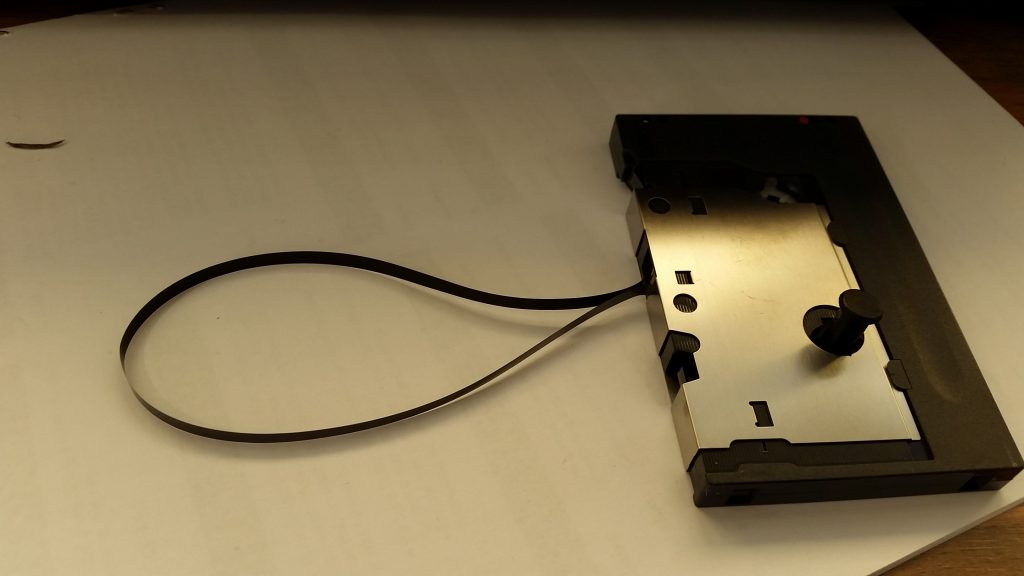Training in Amersfoort
I had my training in Amersfoort. To begin we had a lot of theoretical lessons. These pictures were taken during our first encounter up close with a Leopard 2:
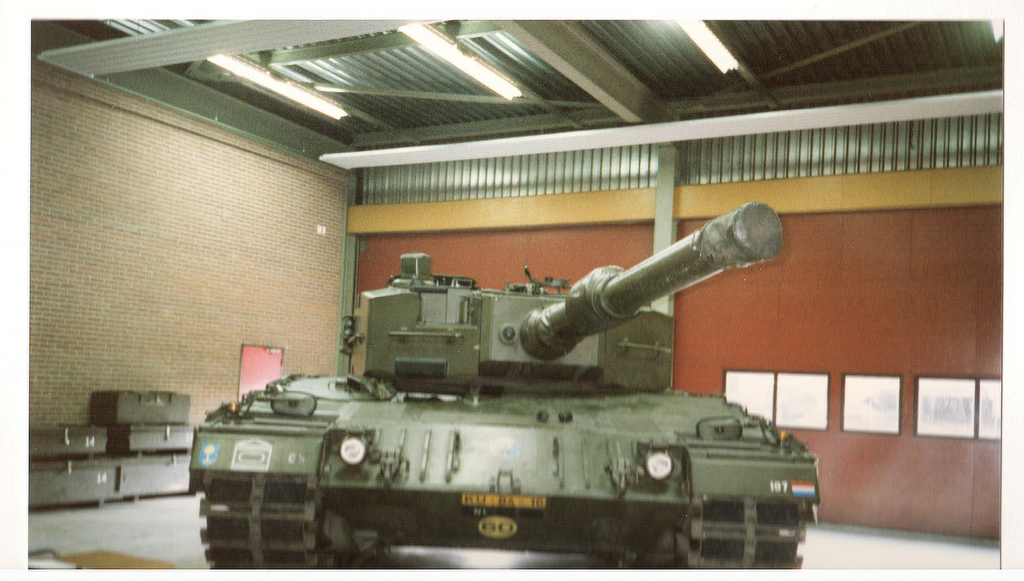 First encounter with the beast, parked right there in the classroom
First encounter with the beast, parked right there in the classroom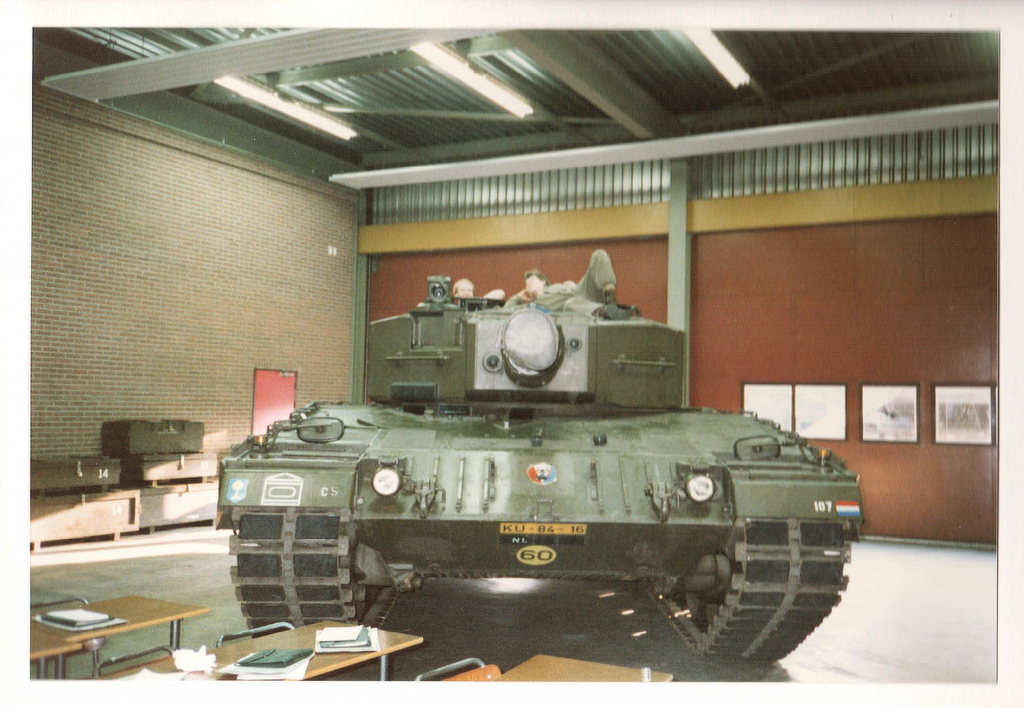 After weeks of training, we went riding with it:
After weeks of training, we went riding with it:
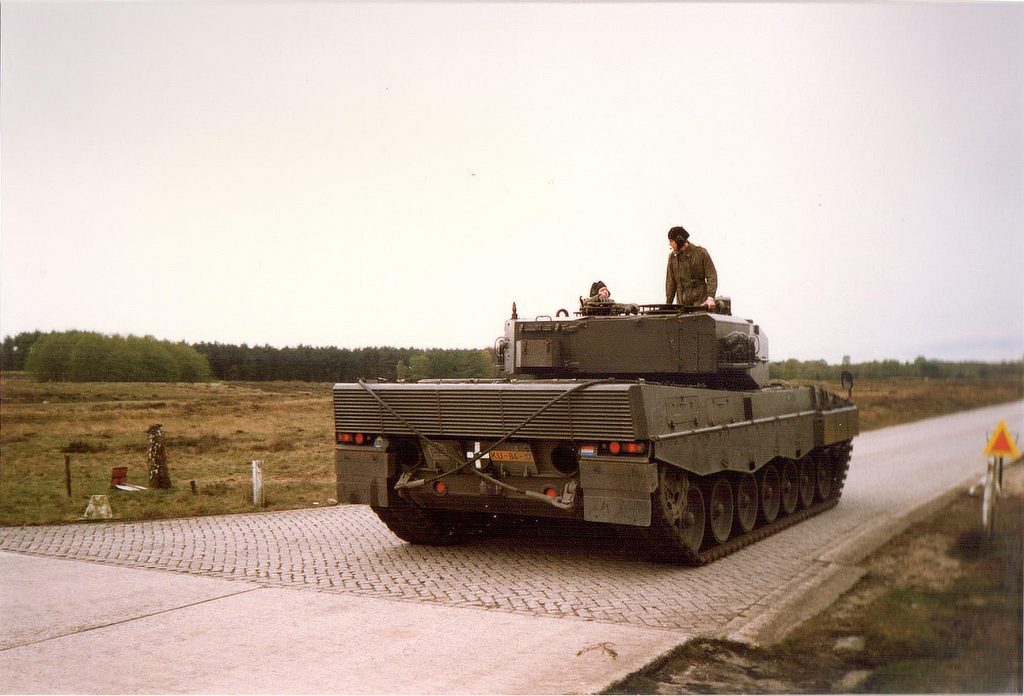 learning to guide the tank backwards from the command hatch.
learning to guide the tank backwards from the command hatch.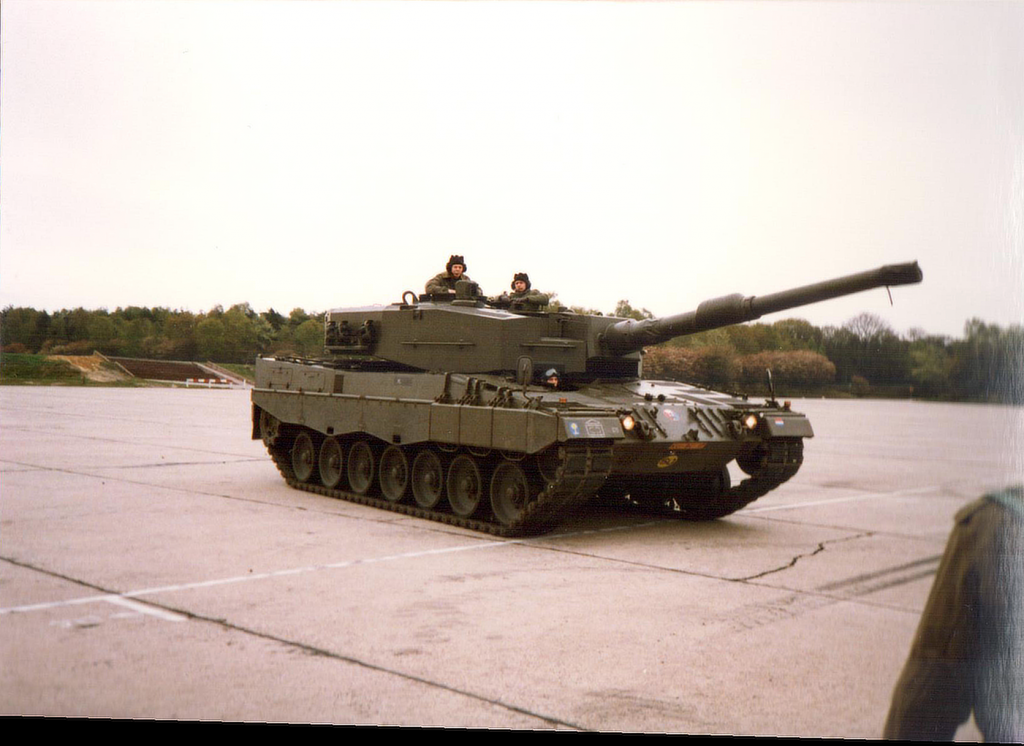
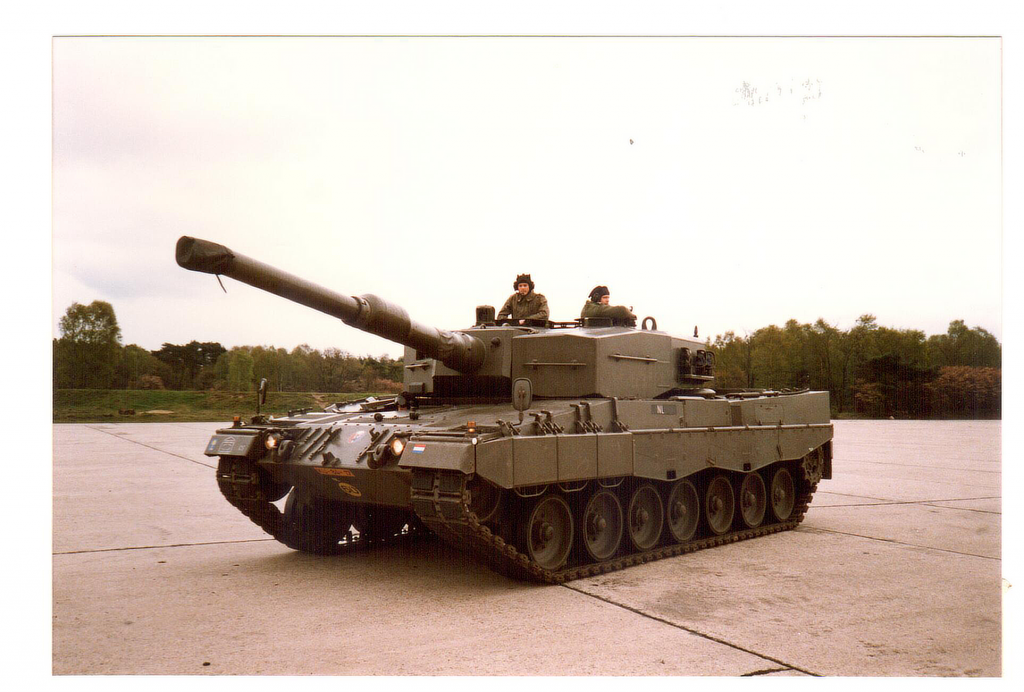 And finally, after weeks and weeks, we went on exercise with it:
And finally, after weeks and weeks, we went on exercise with it:
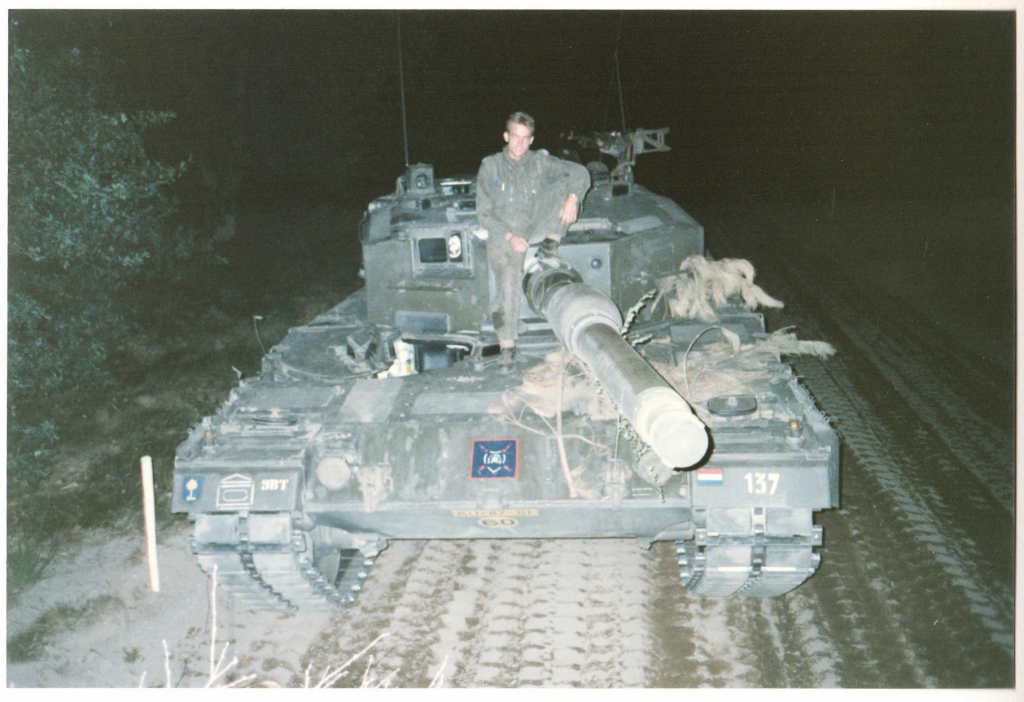
This was out first night exercise with the tank.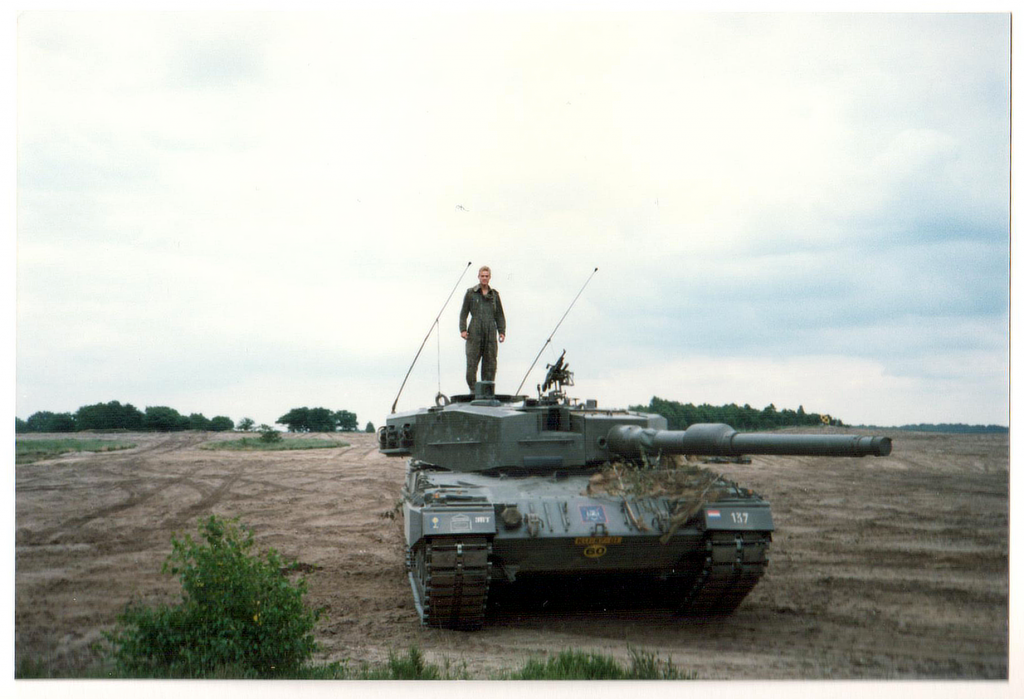 Me on top of the leopard 2.
Me on top of the leopard 2.
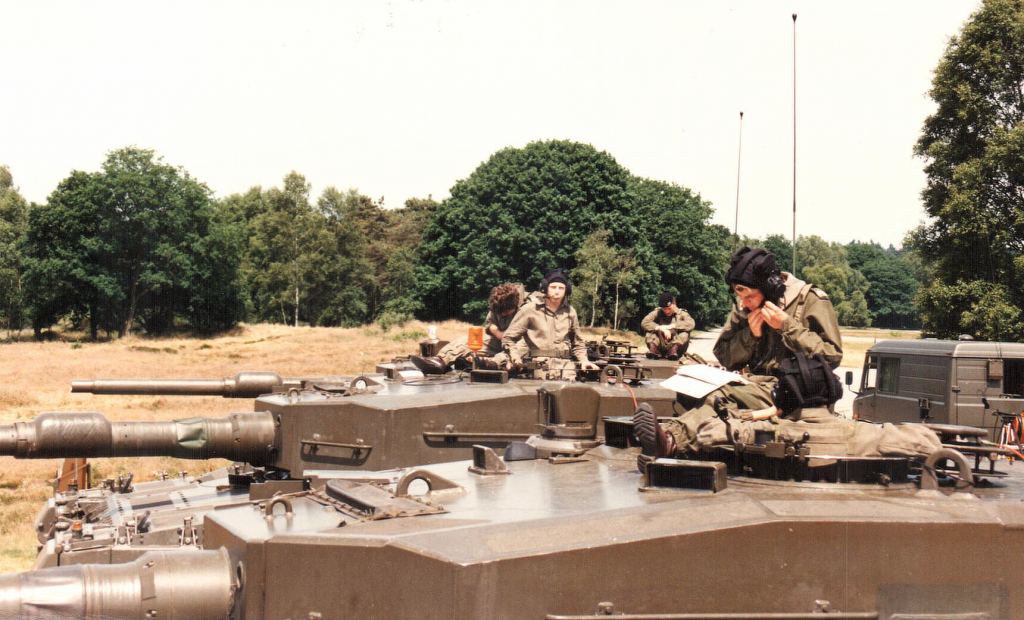 This was during our first exercise as a platoon with the platoon leader putting on his cap.
This was during our first exercise as a platoon with the platoon leader putting on his cap.
Paraat
After that period in the Netherlands, which lasted 6 months, I was stationed in Germany in Bergen-Hohne. Here are some pictures from there:
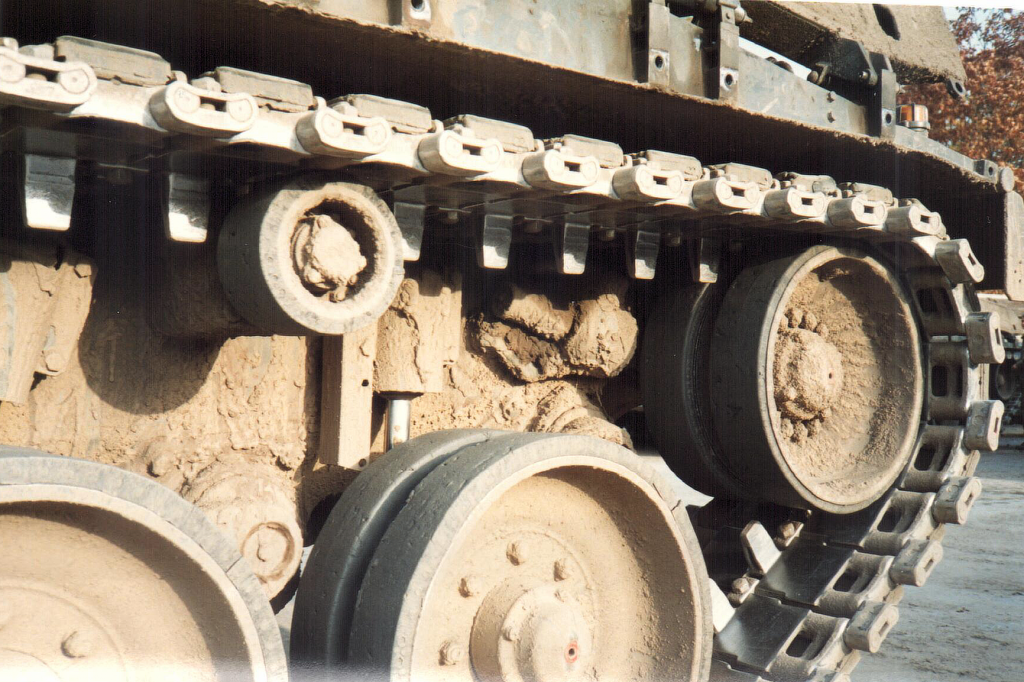 detail of the front of the wheel mechanism
detail of the front of the wheel mechanism
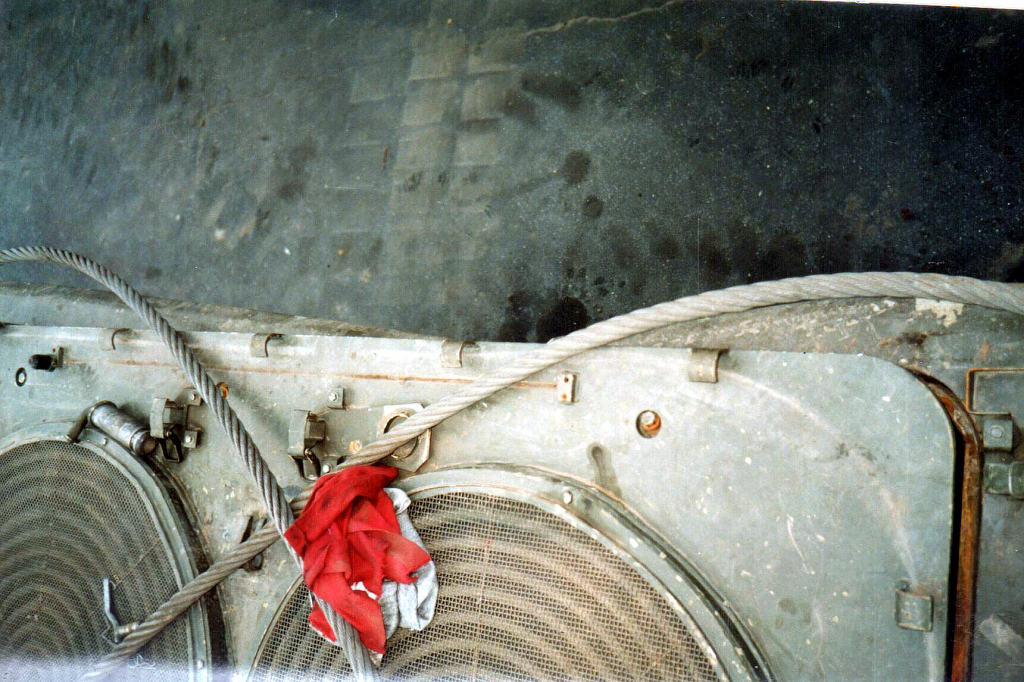 This picture was taken from a tank of which the back had had a collision with a turrent.
This picture was taken from a tank of which the back had had a collision with a turrent.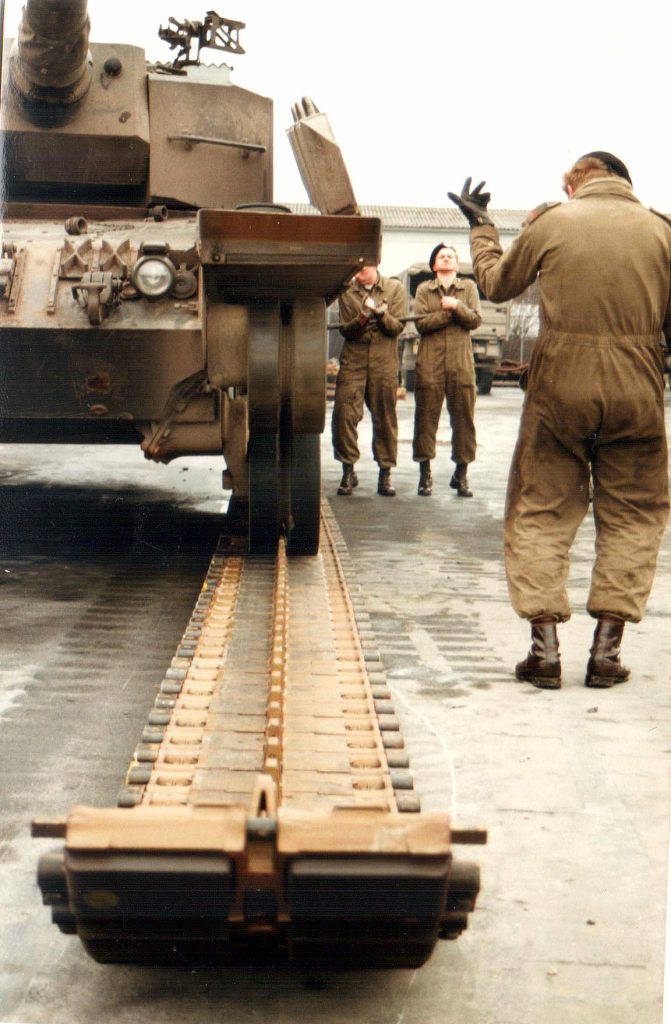 Here we are busy putting a new track on the leopard 2. Needless to say the track is very very heavy.
Here we are busy putting a new track on the leopard 2. Needless to say the track is very very heavy.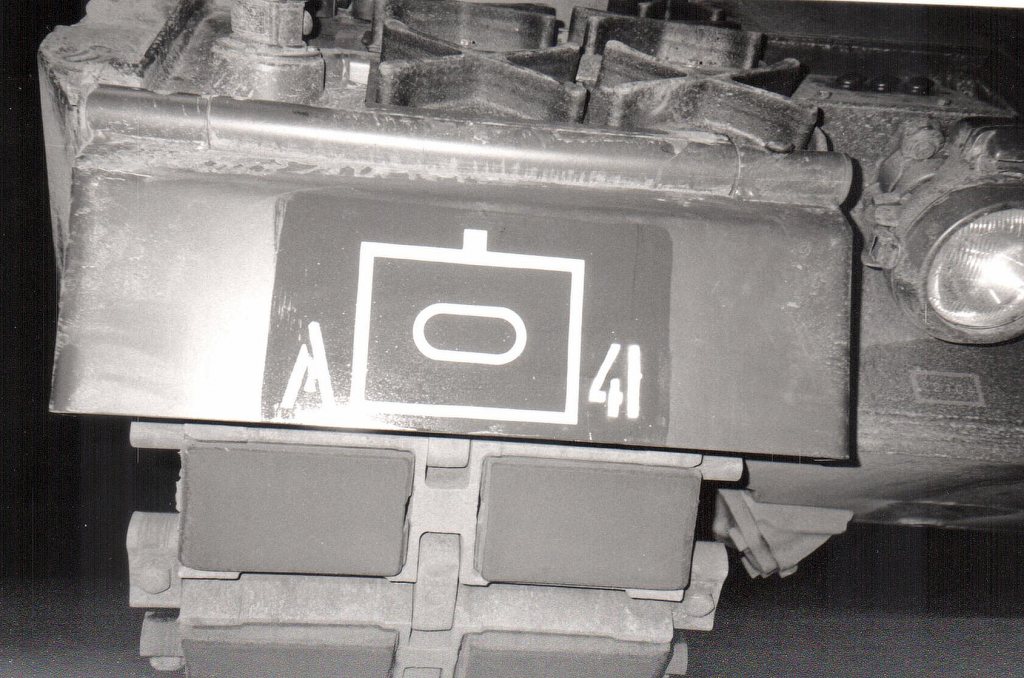 A Eskadron 41 Tankbataljon
A Eskadron 41 Tankbataljon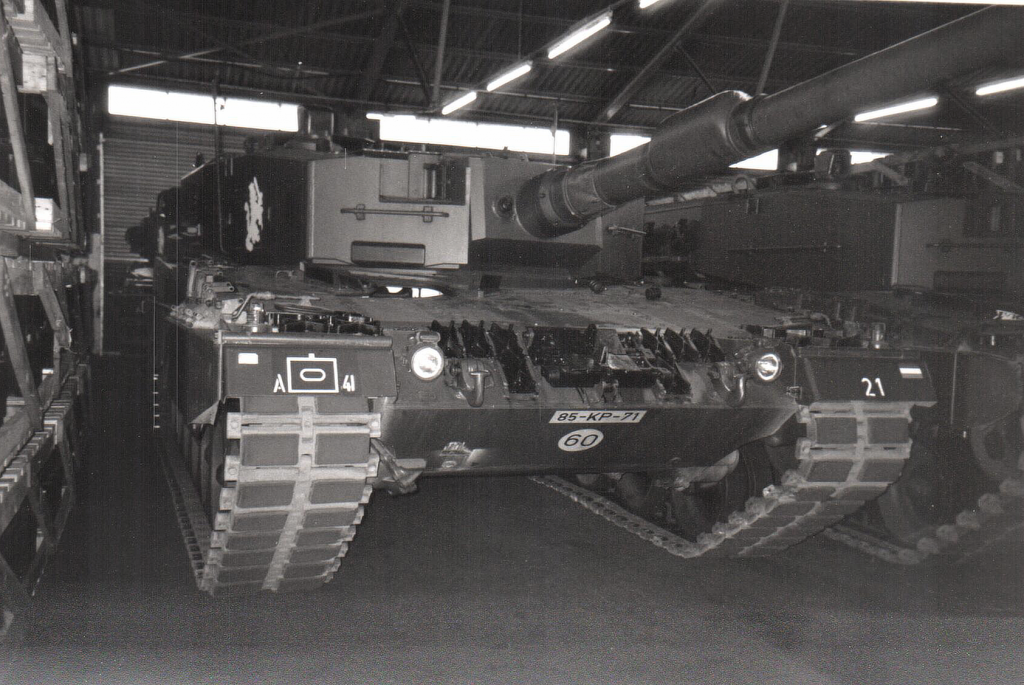
Field exercises
We also went into the field. A lot. Sometimes for a few days. Here are some pictures:
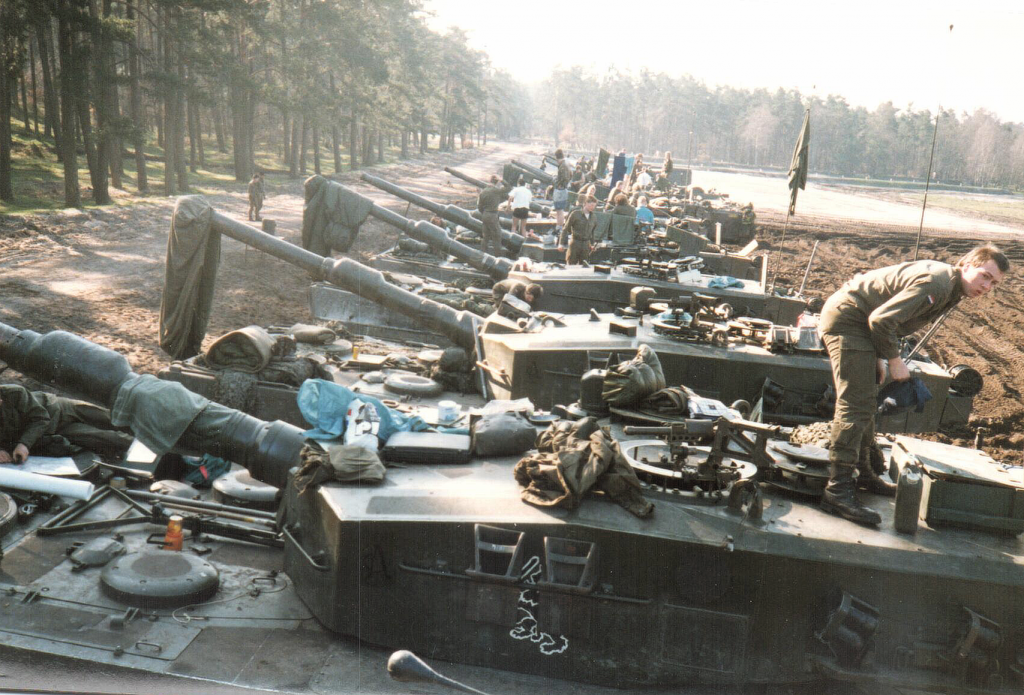 Waking up after a night in the field.
Waking up after a night in the field.
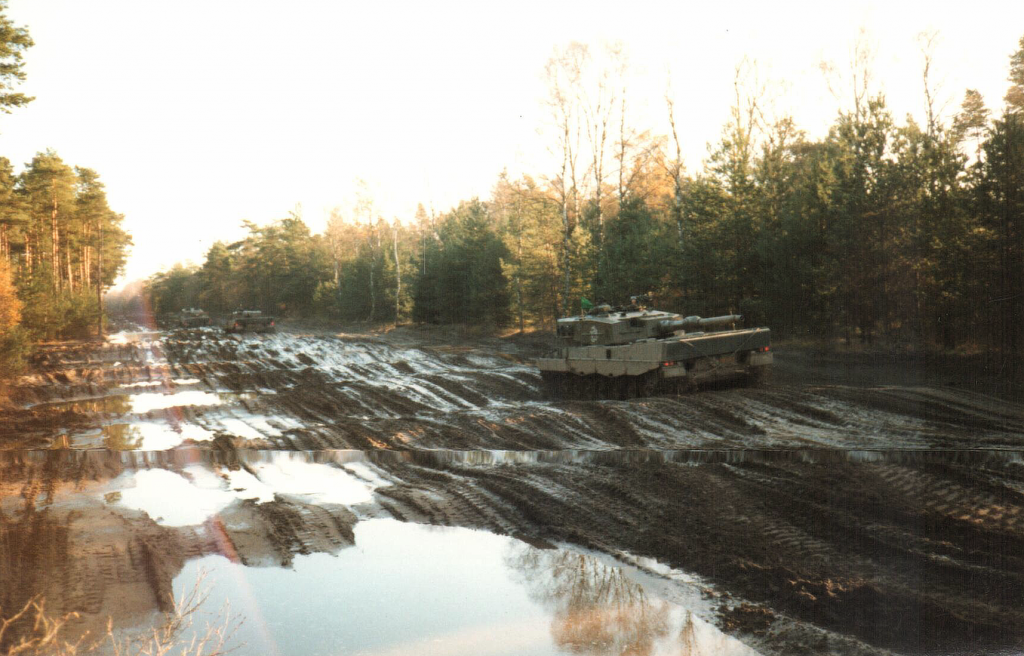 ‘wasbord’. This terrain is formed this way with the bumps due to the tanks driving there. It gets worse over time. It is very uncomfortable to drive.
‘wasbord’. This terrain is formed this way with the bumps due to the tanks driving there. It gets worse over time. It is very uncomfortable to drive.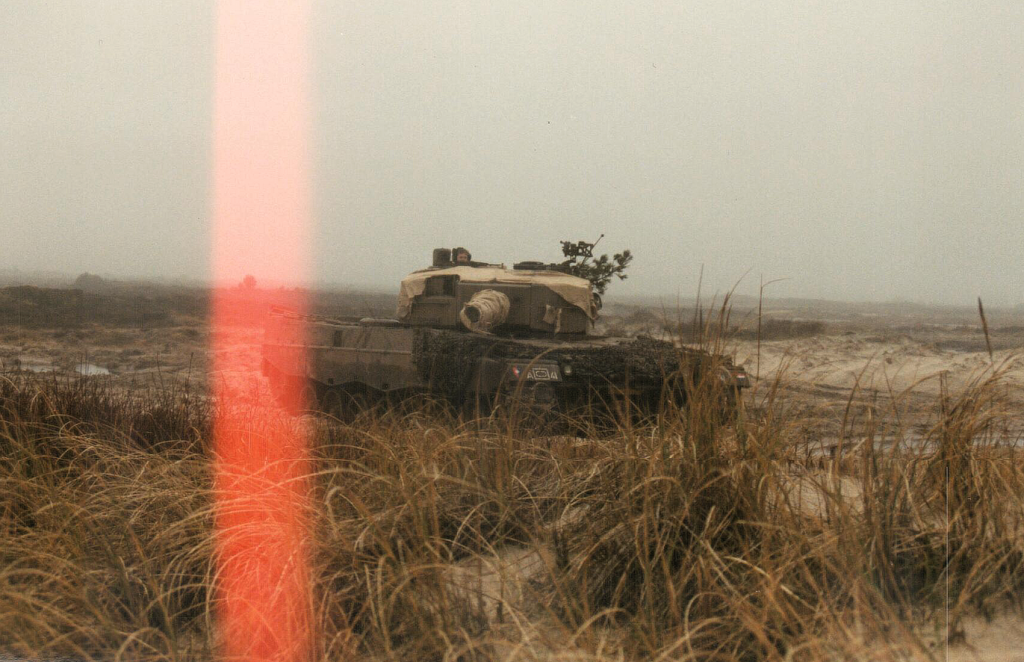 Leopard 2 hidden behind a bump in the terrain.
Leopard 2 hidden behind a bump in the terrain.
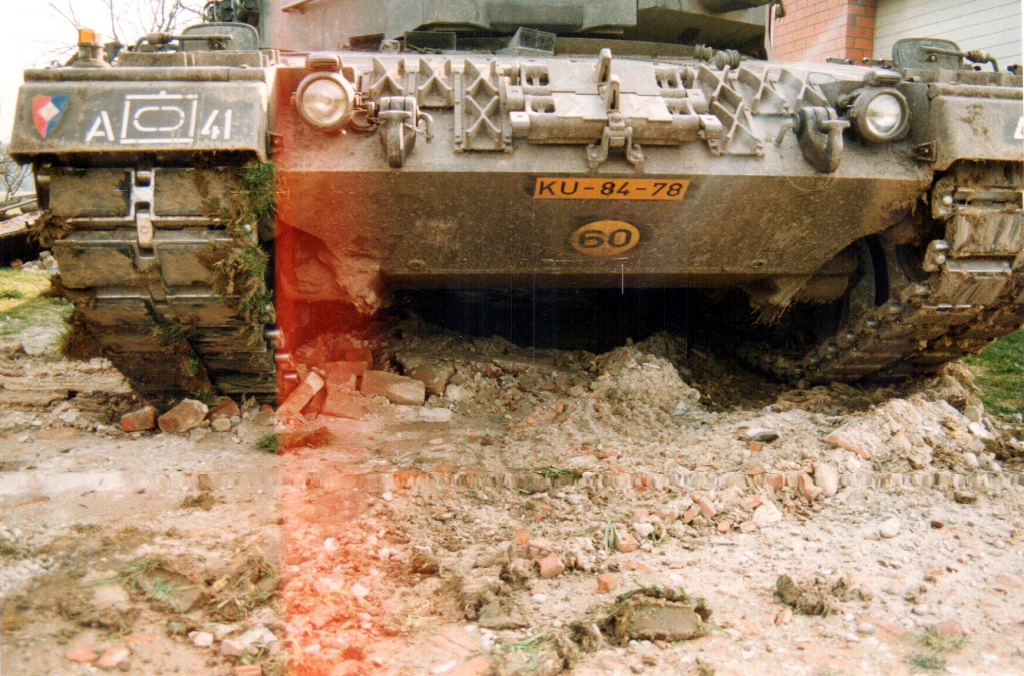 All Terrain Vehicle. The leopard 2 has no problem with any terrain.
All Terrain Vehicle. The leopard 2 has no problem with any terrain.
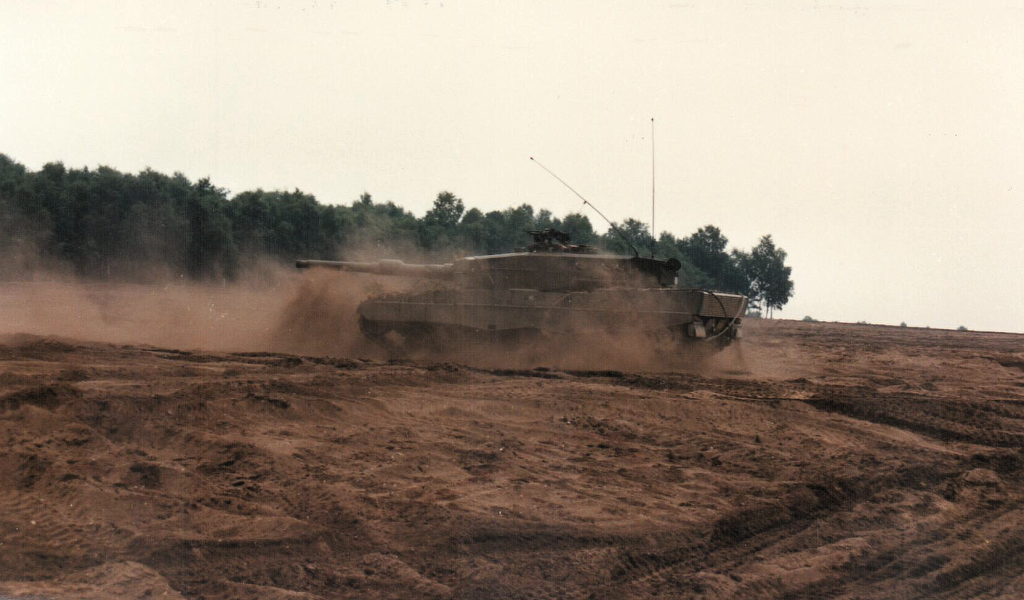 Full speed ahead, eeeh reverse I mean. This is a manoeuvre to withdraw, driving backwards full speed.
Full speed ahead, eeeh reverse I mean. This is a manoeuvre to withdraw, driving backwards full speed.
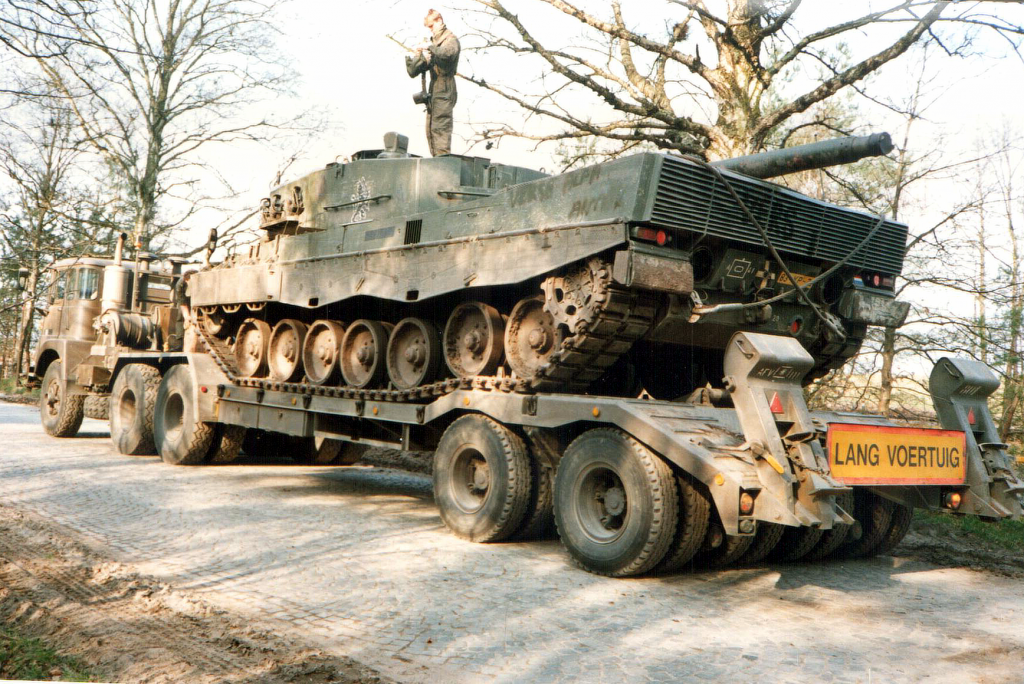 lolo. The leopard on a low-loader.
lolo. The leopard on a low-loader.
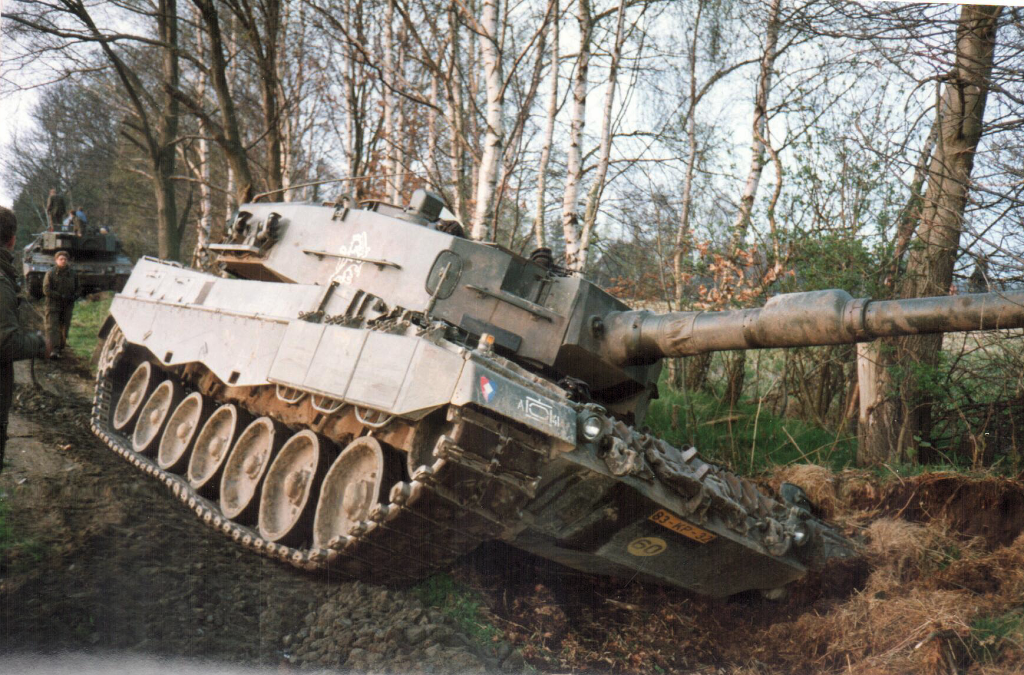 Parked in a ditch, this tank wasn’t coming out by itself. It had to be towed out.
Parked in a ditch, this tank wasn’t coming out by itself. It had to be towed out.
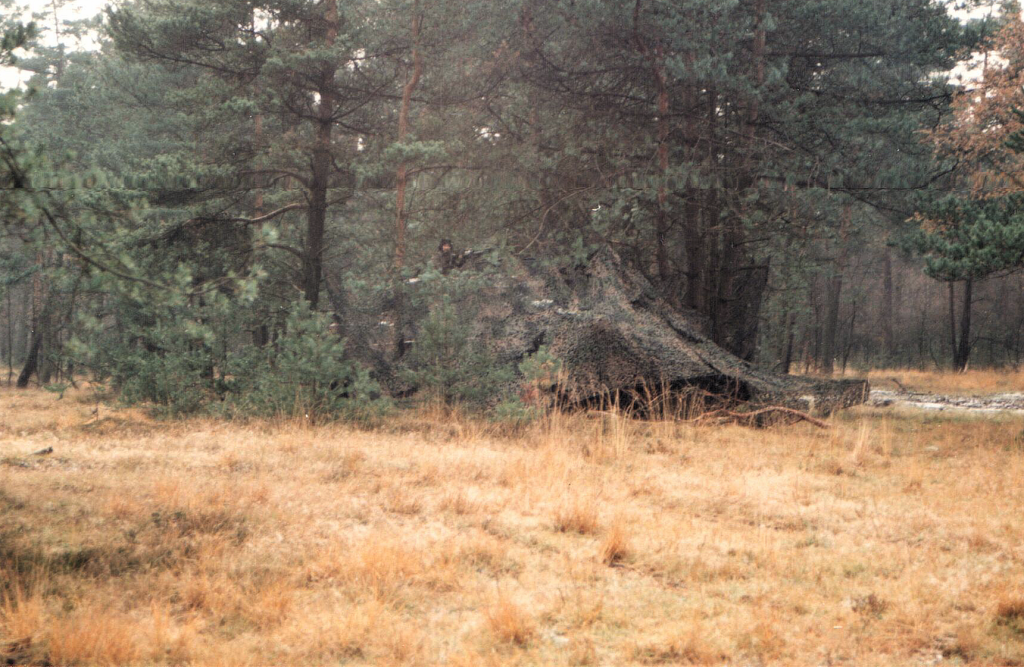 What leo 2?
What leo 2?
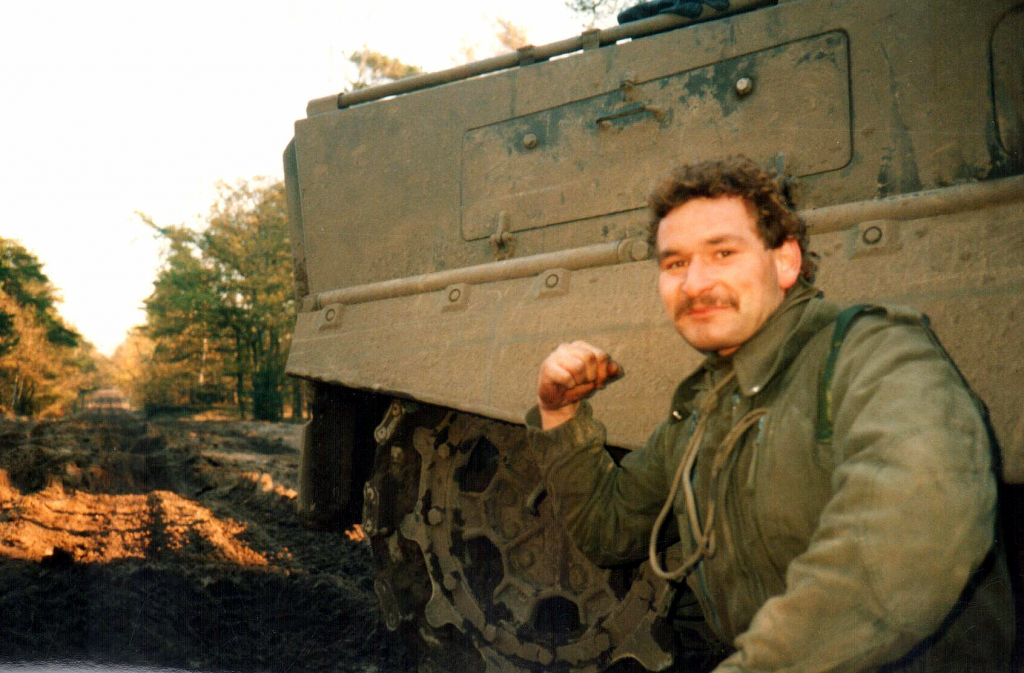 My driver managed to drive the tracks off of our tank, making a turn in very loose sand. It took us a while to get the track back on the cog.
My driver managed to drive the tracks off of our tank, making a turn in very loose sand. It took us a while to get the track back on the cog.
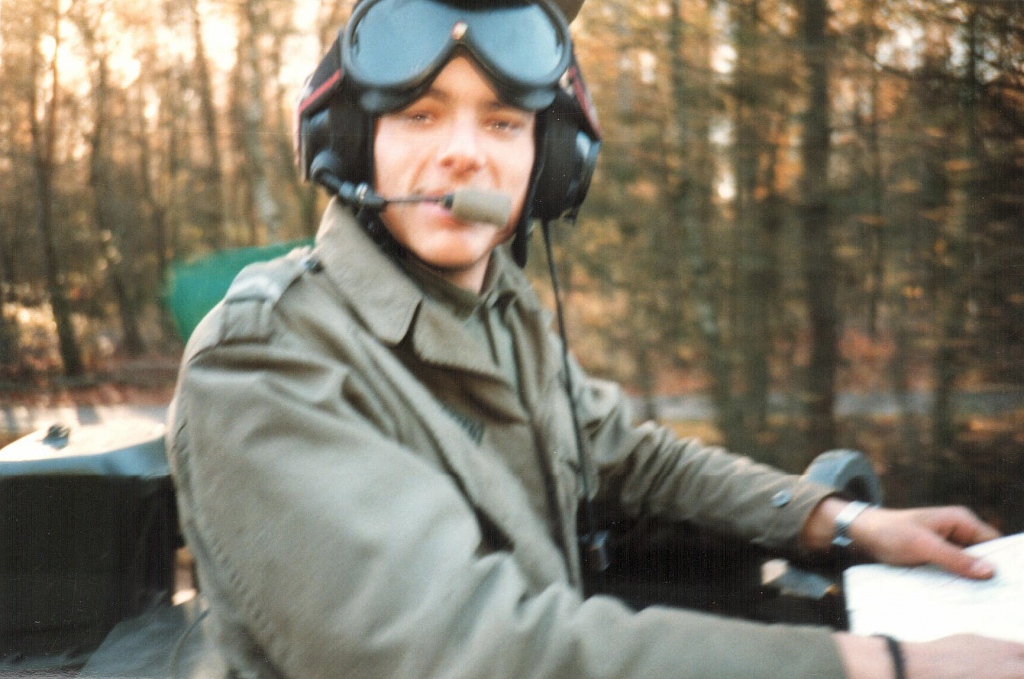 Me in action. Reading the map doing a relocation during the excise. Unfortunately the picture is not very good, but the tank was moving around a lot.
Me in action. Reading the map doing a relocation during the excise. Unfortunately the picture is not very good, but the tank was moving around a lot.
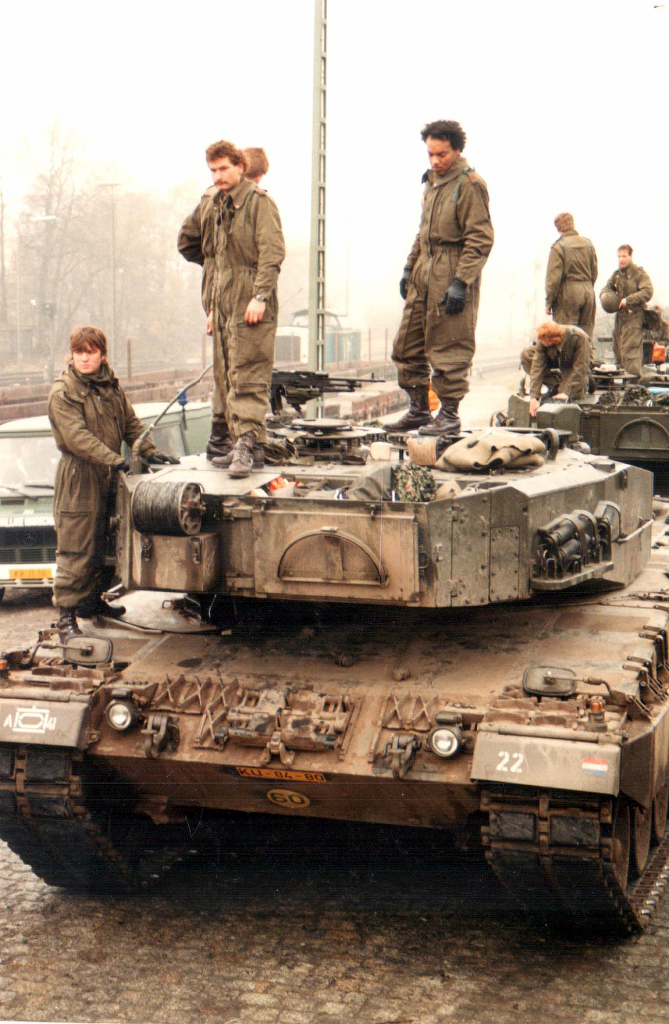 My crew and my tank just after we rolled the tank from the train that had brought us to the exercise field on the other side Germany. This picture was taken in the morning, as the trainride was a night train. I am standing just behind my driver. I am the one with my back to the photographer.
My crew and my tank just after we rolled the tank from the train that had brought us to the exercise field on the other side Germany. This picture was taken in the morning, as the trainride was a night train. I am standing just behind my driver. I am the one with my back to the photographer.
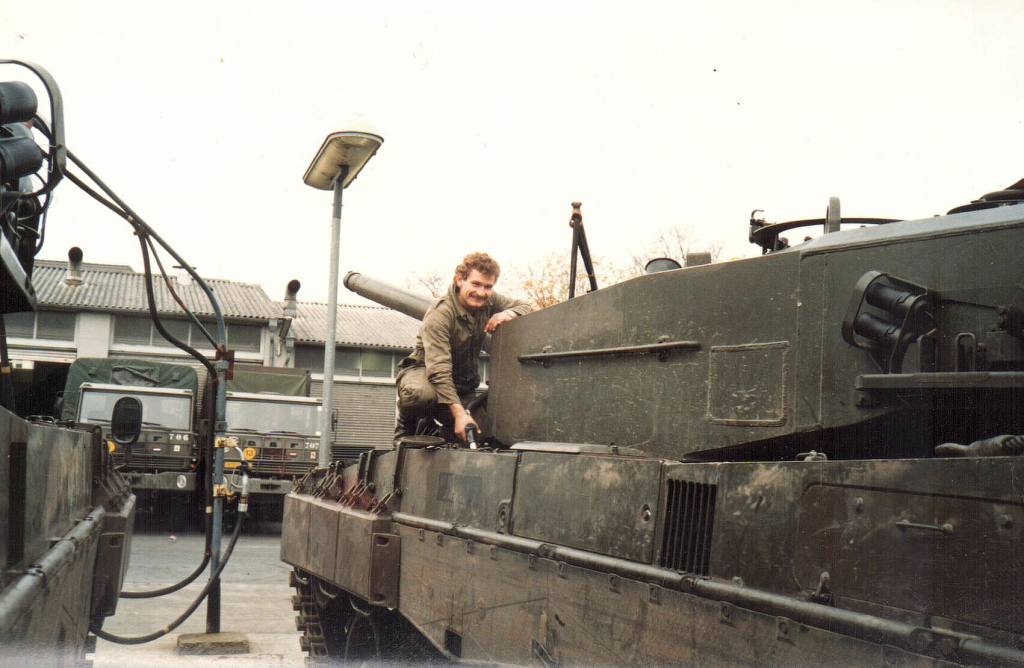 Fill ‘er up! This takes long. Very long. 1100 liter.
Fill ‘er up! This takes long. Very long. 1100 liter.
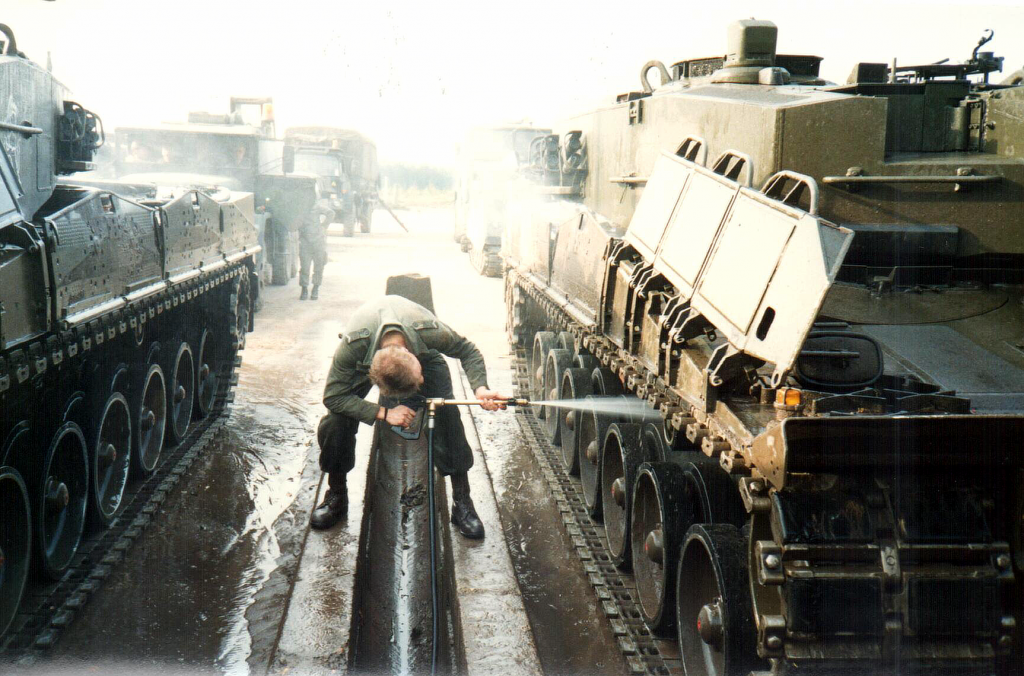 Me giving the tank a thorough cleaning afterwards.
Me giving the tank a thorough cleaning afterwards.
Shooting practice
In Bergen-Hohne is Europe’s largest and best shooting range for tanks. Of course we went there. Here are some action pics:
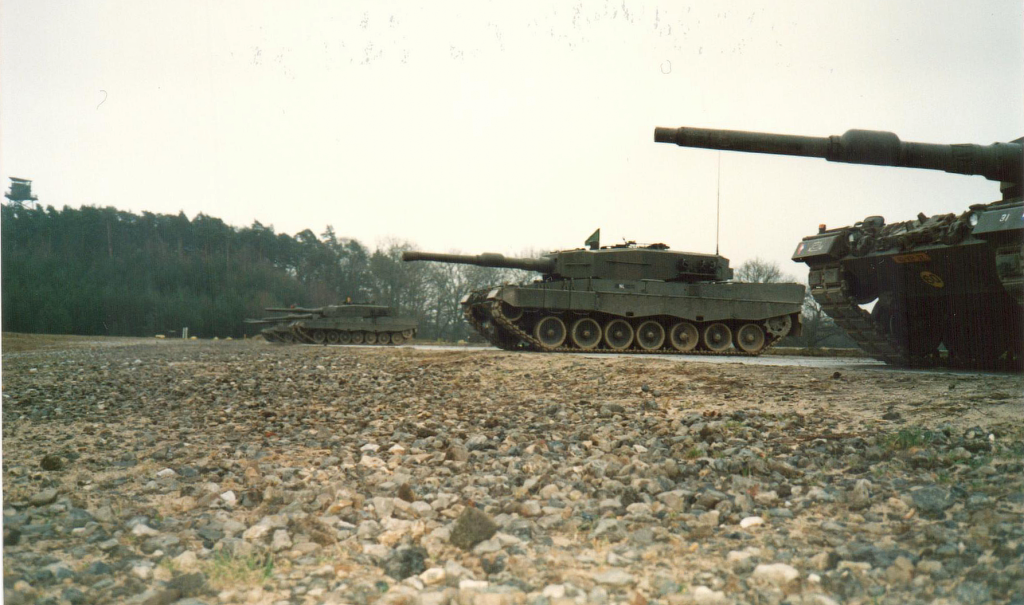 This actually is a small version of a Dutch shooting range where you can practice tactics, like target distribution between tanks etc.
This actually is a small version of a Dutch shooting range where you can practice tactics, like target distribution between tanks etc.
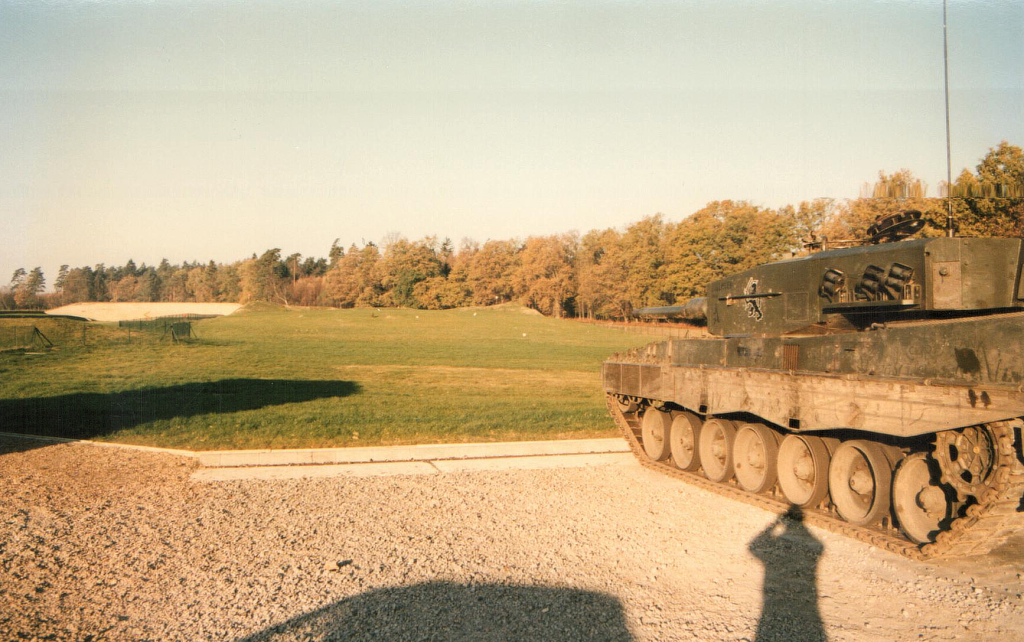 Same small shooting range but then the view as seen from the tanks.
Same small shooting range but then the view as seen from the tanks.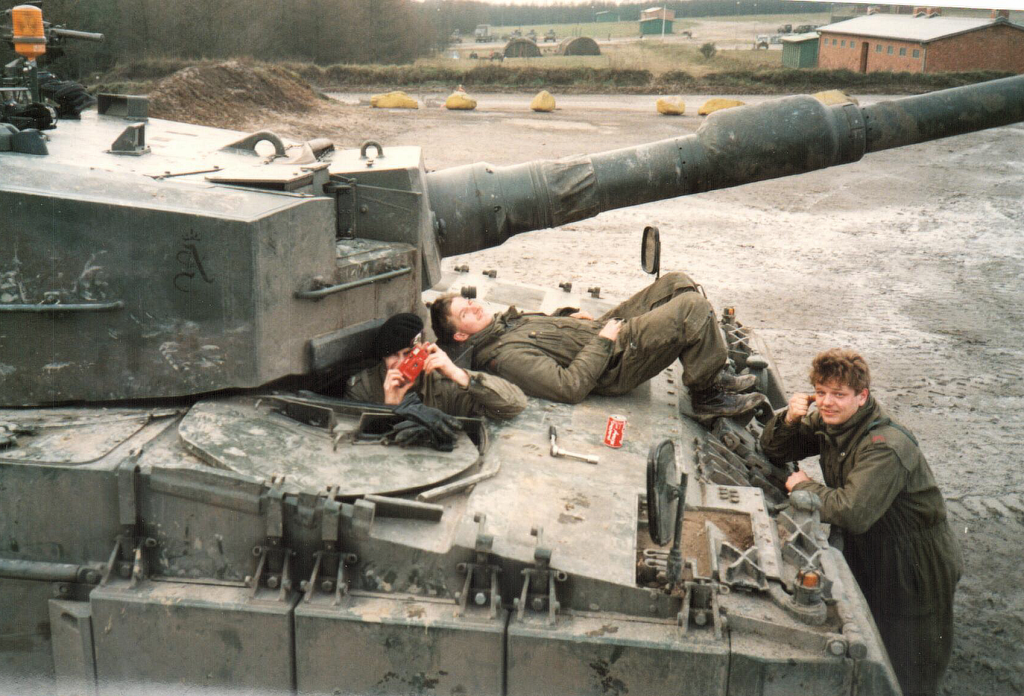 On the big firing range. Drivers resting between sessions.
On the big firing range. Drivers resting between sessions.
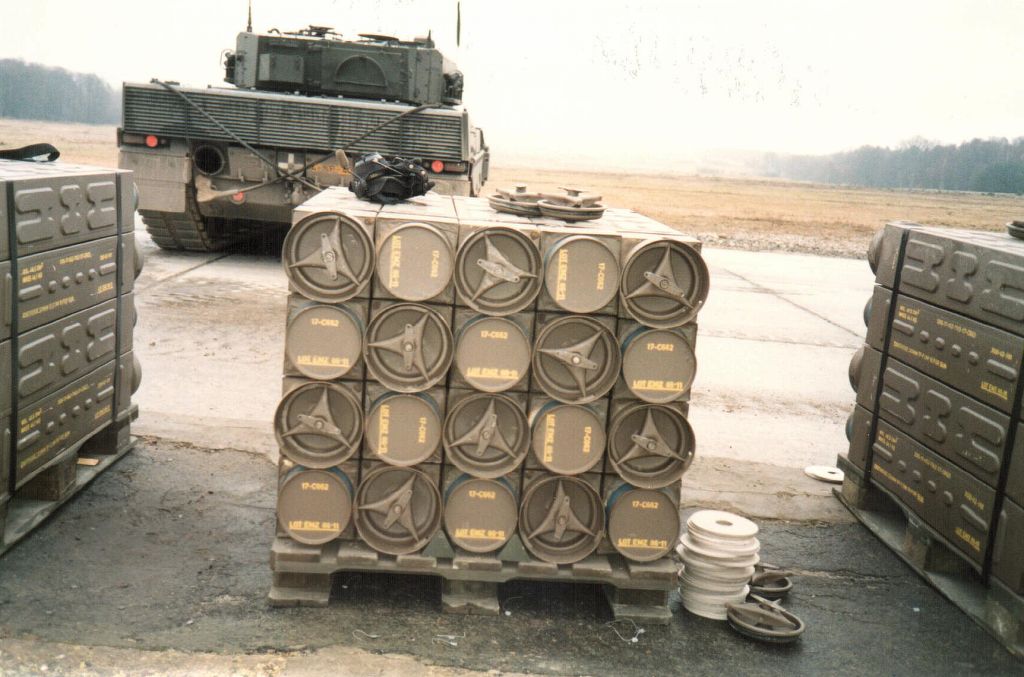 Grenades are stored right behind the shooting tanks.
Grenades are stored right behind the shooting tanks.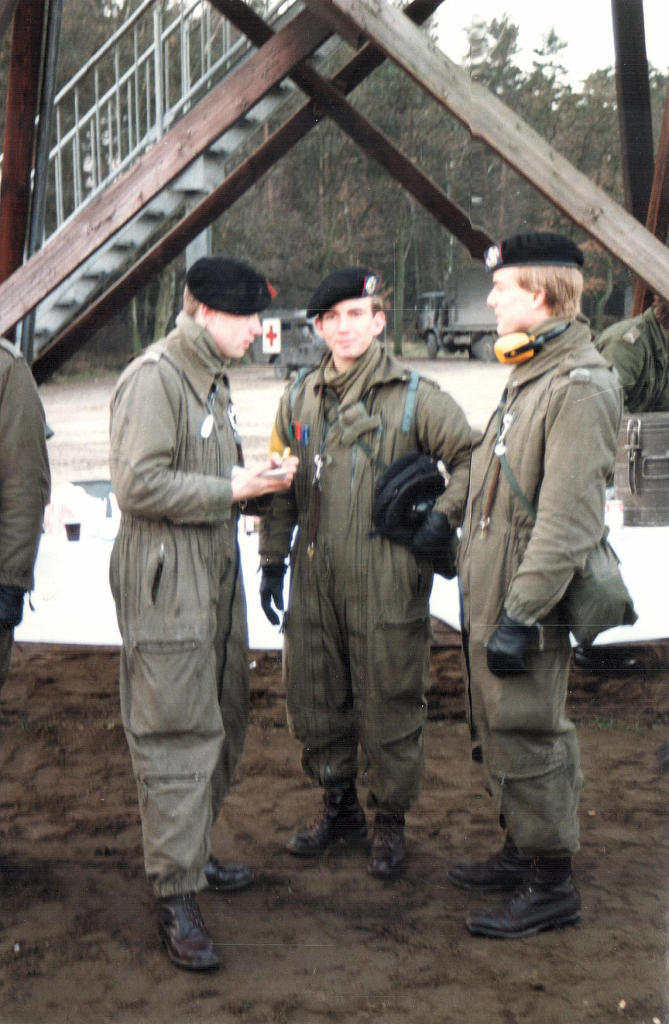 Me (right) and another tank commander talking to the platoon commander (middle).
Me (right) and another tank commander talking to the platoon commander (middle).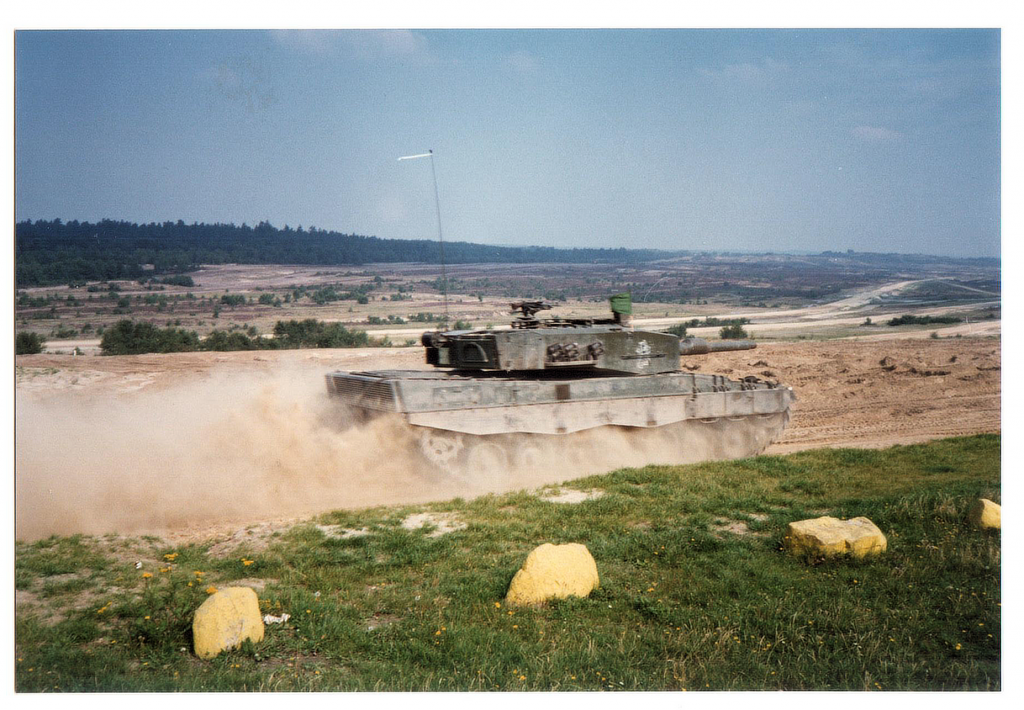 Alpha tank in action, ready for firing.
Alpha tank in action, ready for firing.
real world field exercise
At the very end of the tour, we did a NATO real world exercise, where you drive through the real world and drive the public road through villages and take shelter at some farmer’s place etc.
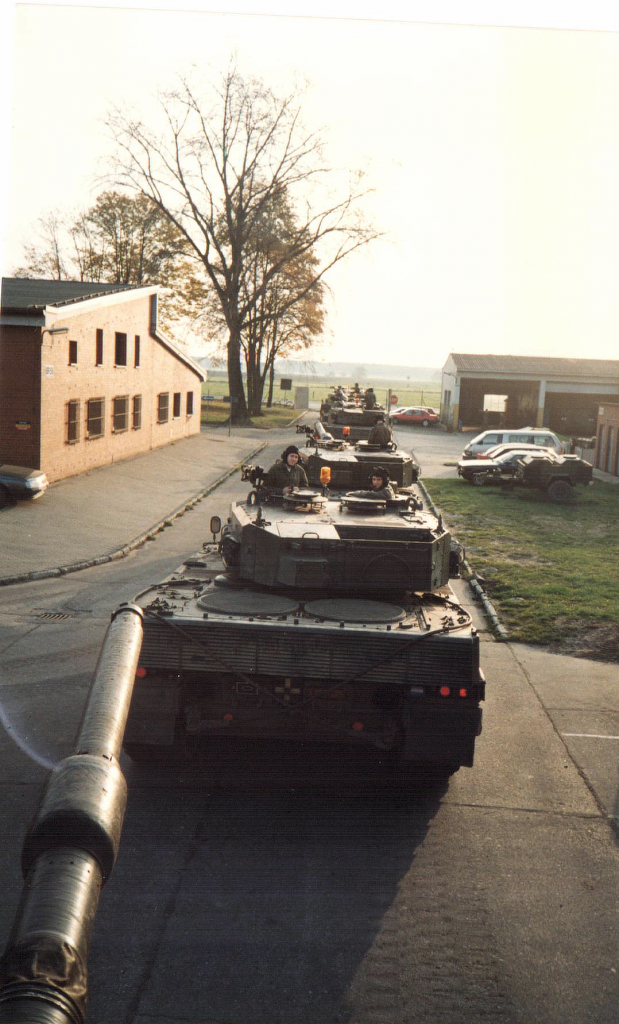 Here we’re waiting to get out of the gate at the barracks.
Here we’re waiting to get out of the gate at the barracks.
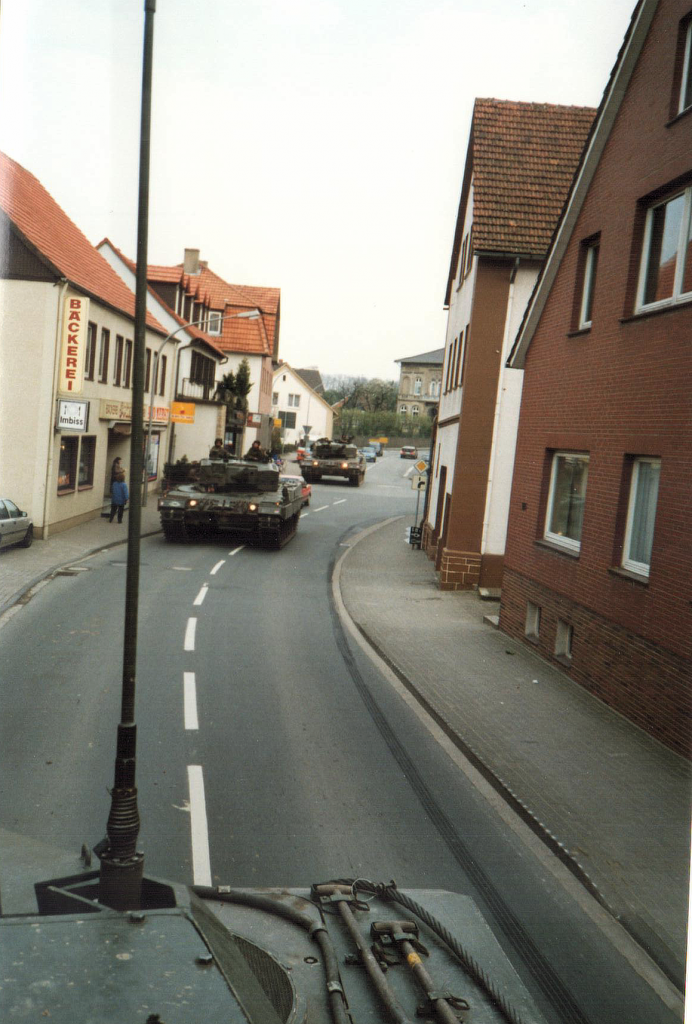 Through the village.
Through the village.
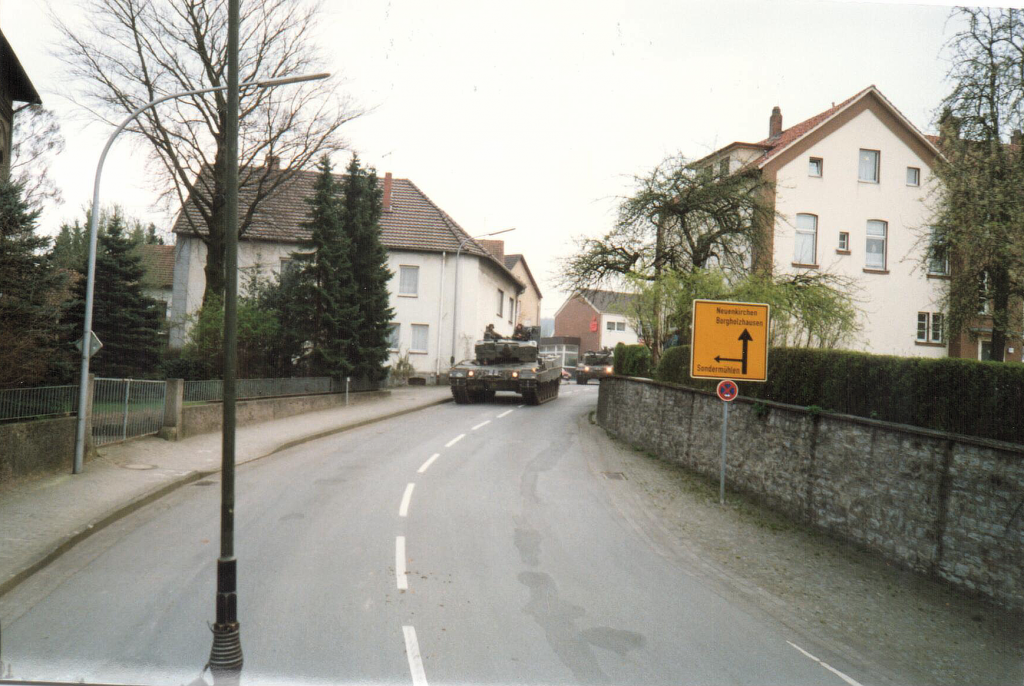 Some of these roads are very narrow.
Some of these roads are very narrow.
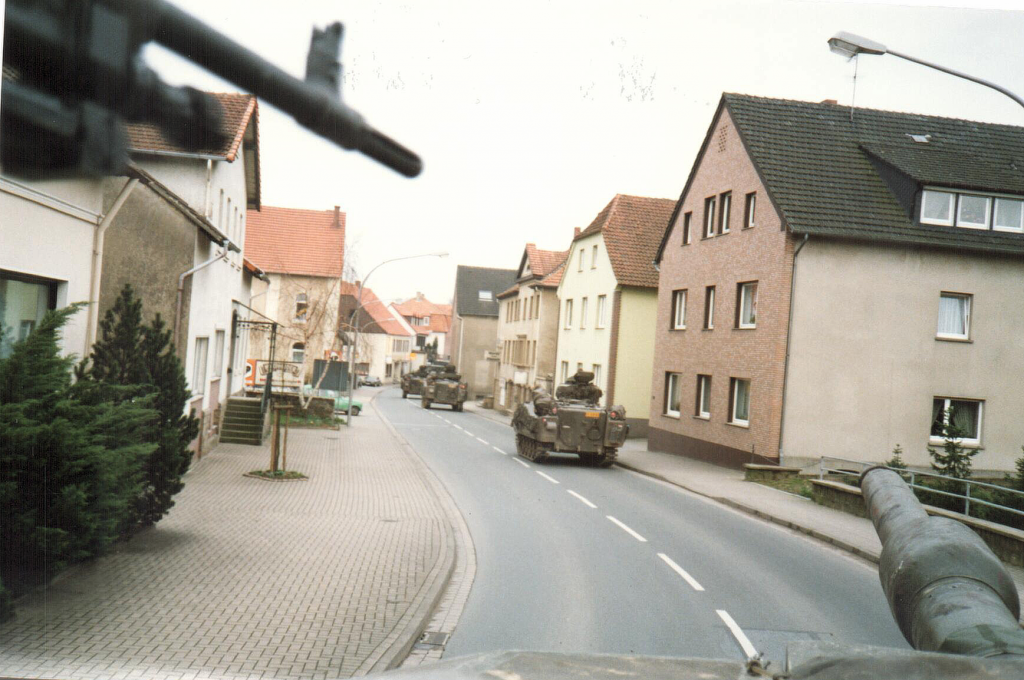 There were also other military vehicles involved. In fact it was a complete exercise, where multiple countries collaborated.
There were also other military vehicles involved. In fact it was a complete exercise, where multiple countries collaborated.
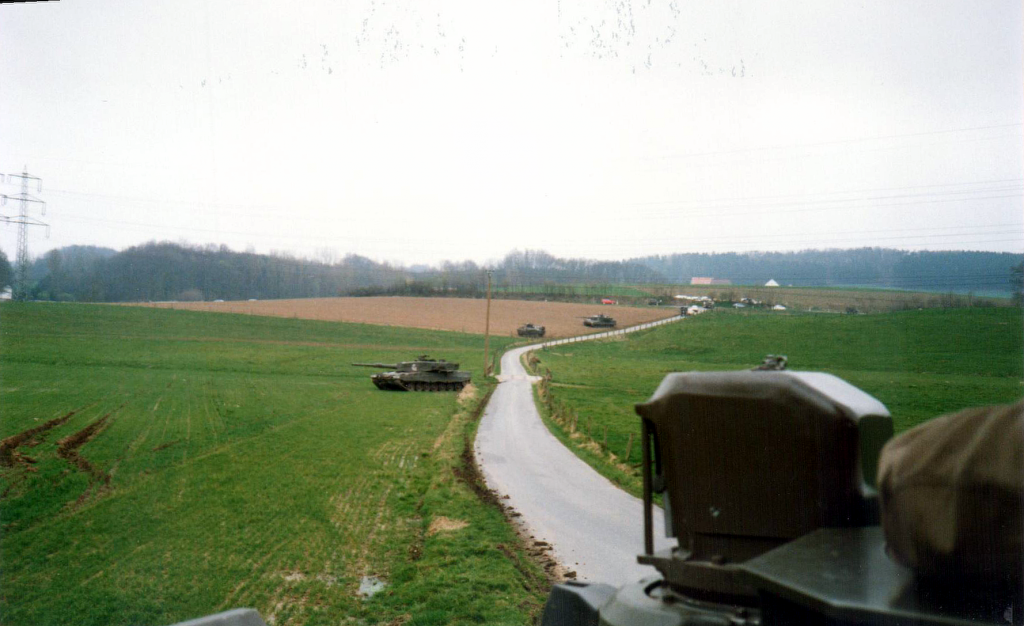 Taking a stand in a field.
Taking a stand in a field.
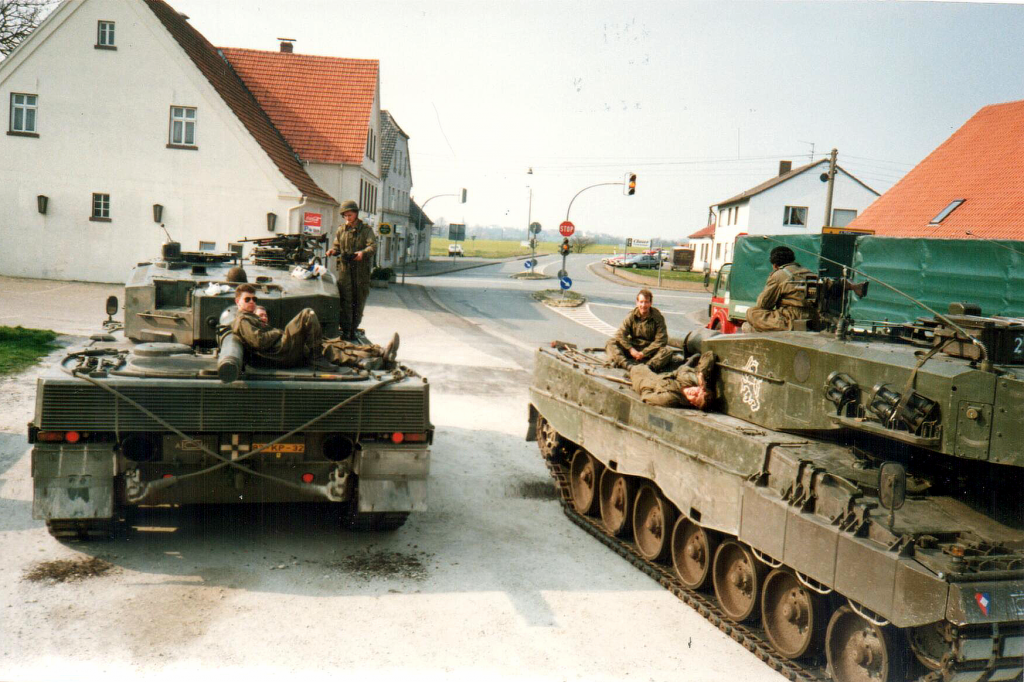 A moment of rest, parking in a small town by the side of the road.
A moment of rest, parking in a small town by the side of the road.
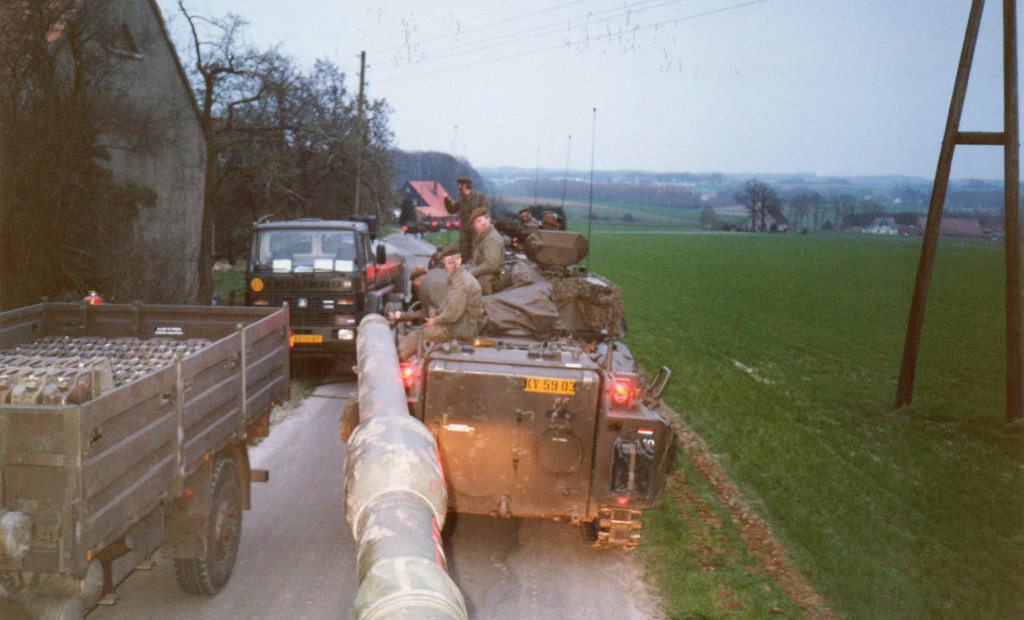 Getting supplies like fuel (jerrycans) in the late evening.
Getting supplies like fuel (jerrycans) in the late evening.
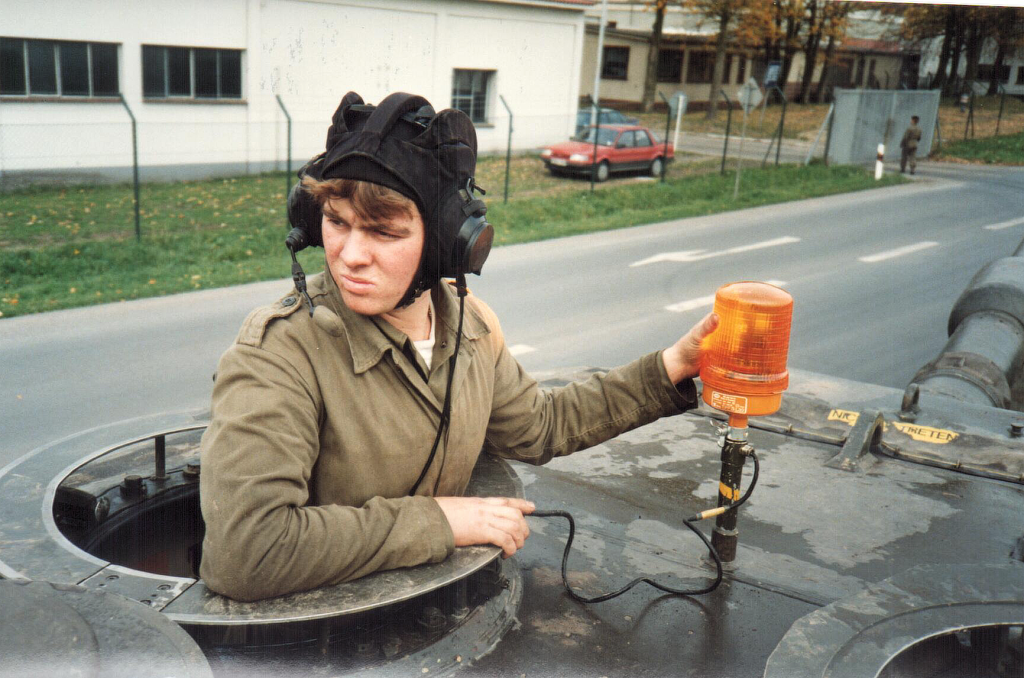 Loader in action. He is in charge of the flashlight.
Loader in action. He is in charge of the flashlight.
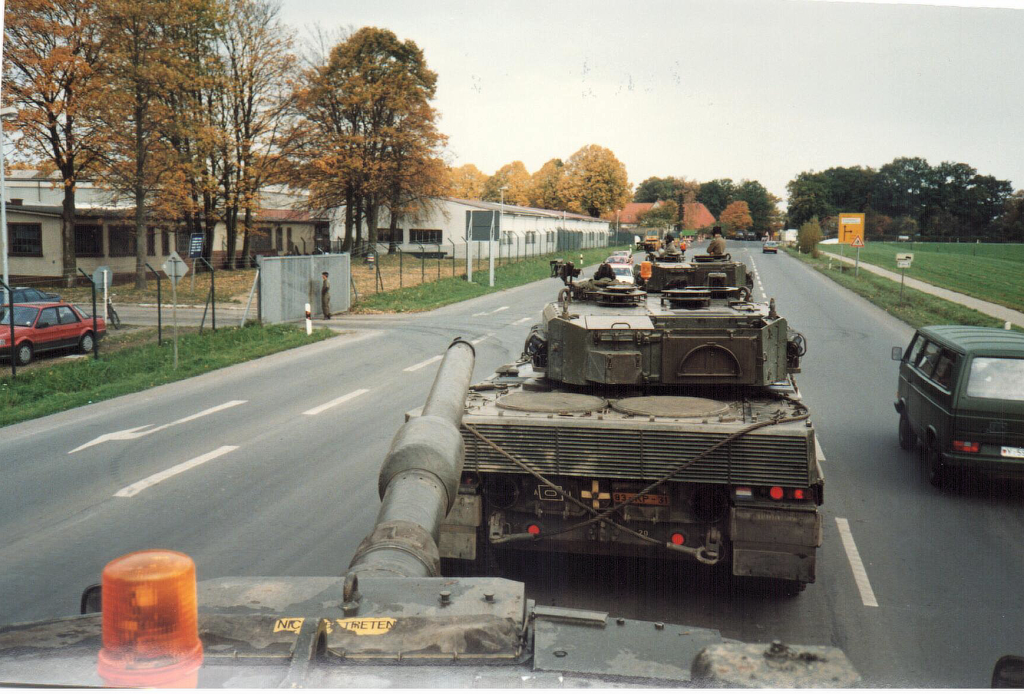 Queuing to return to the base. The exercise lasted about 3 days.
Queuing to return to the base. The exercise lasted about 3 days.

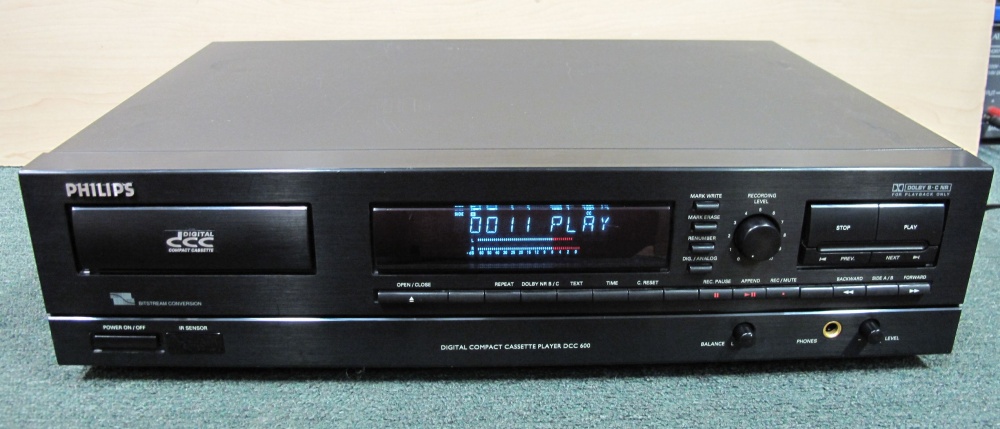
.jpg)
